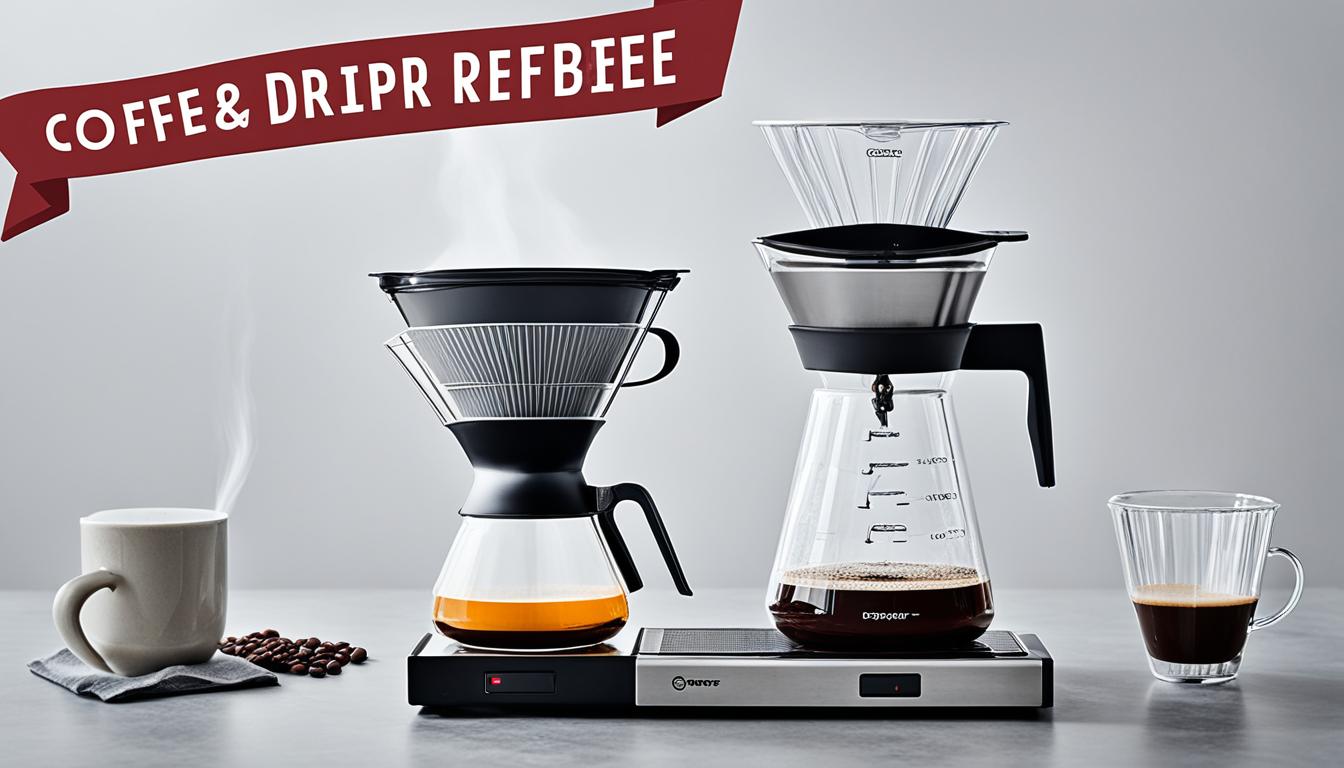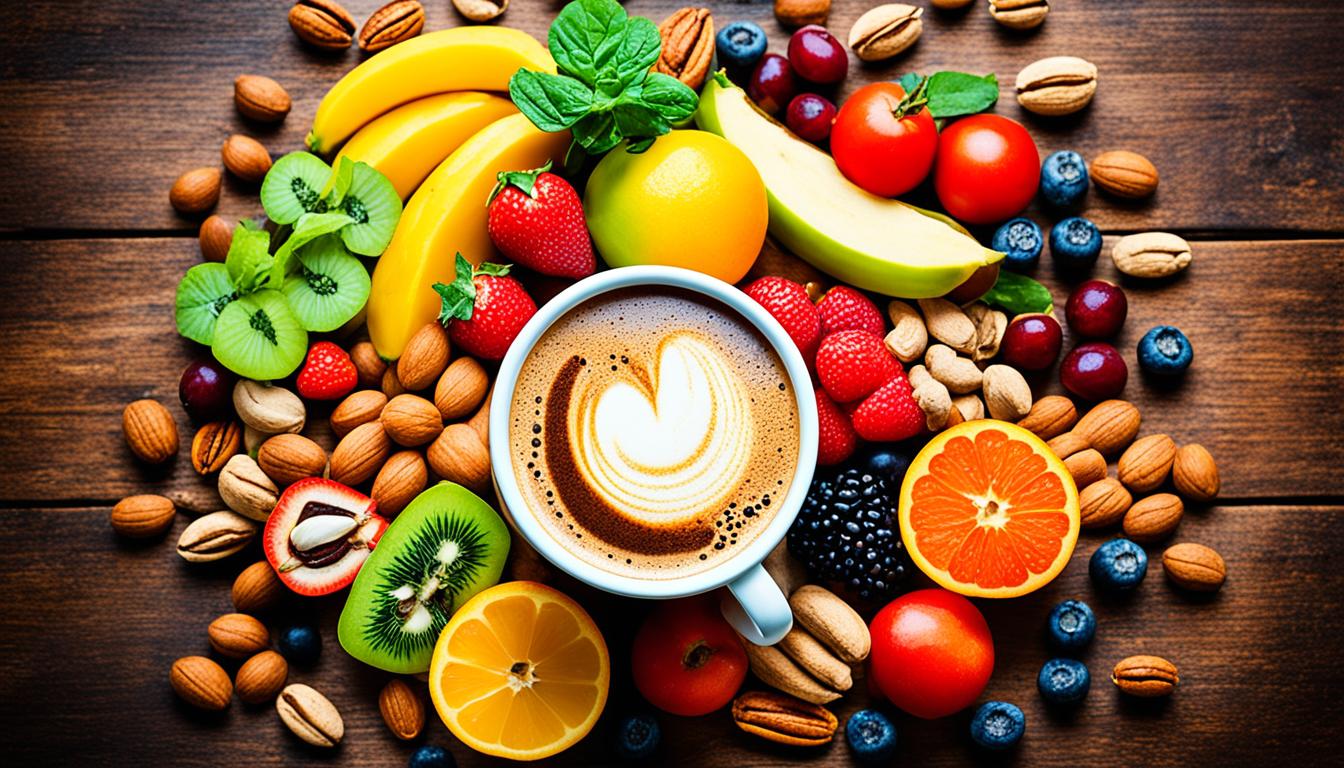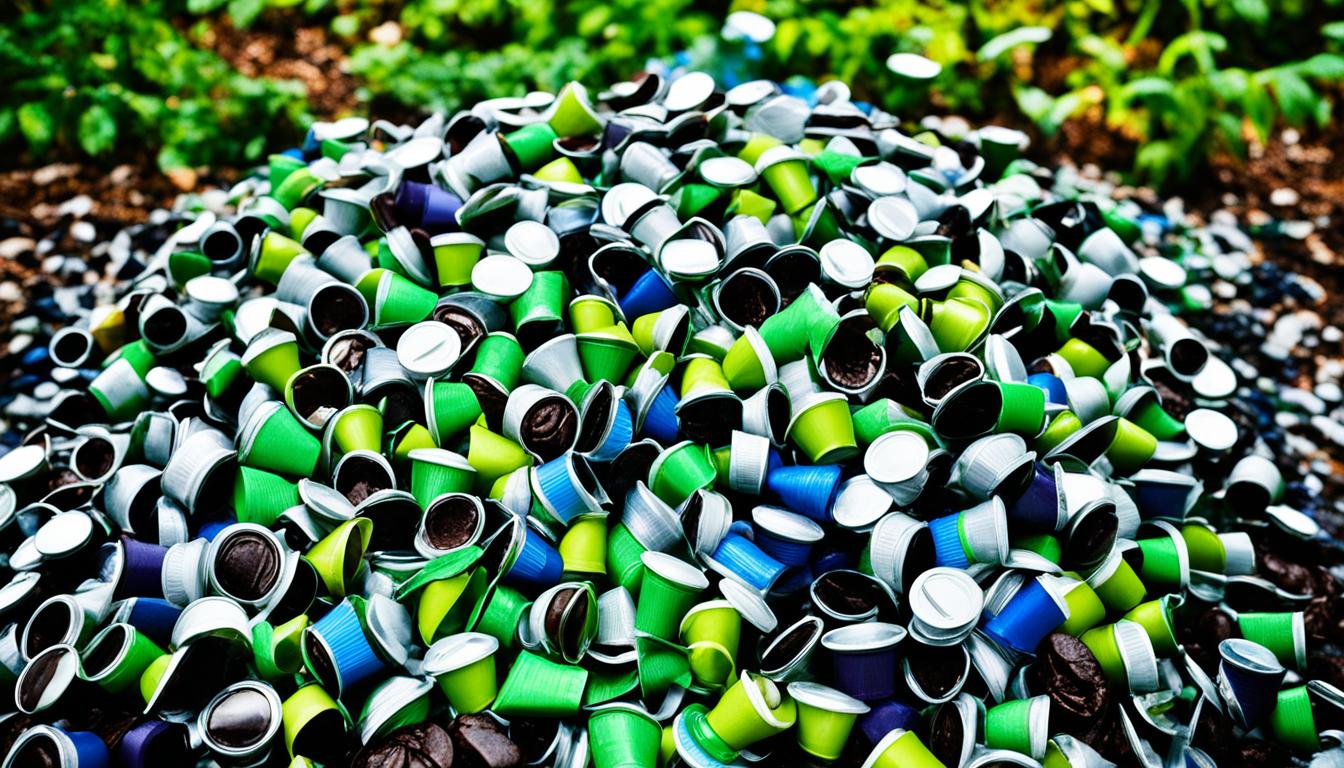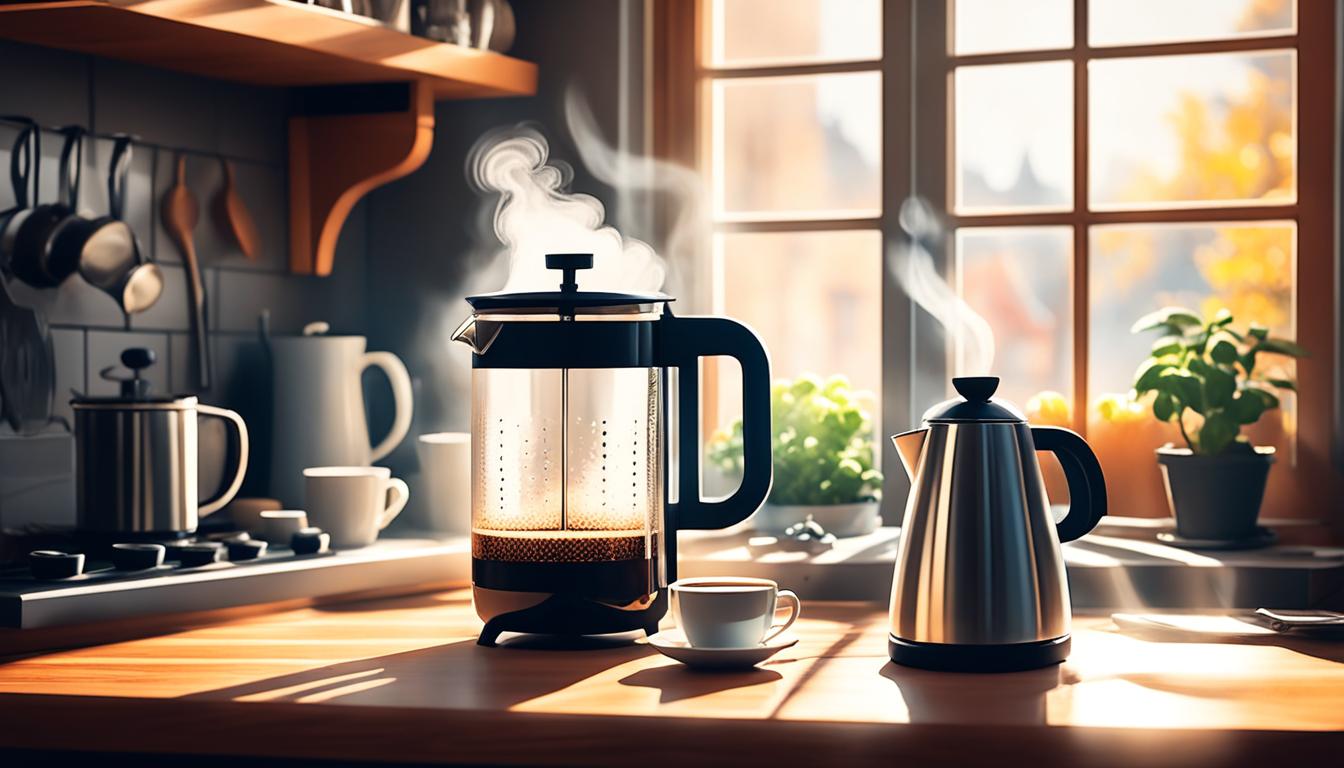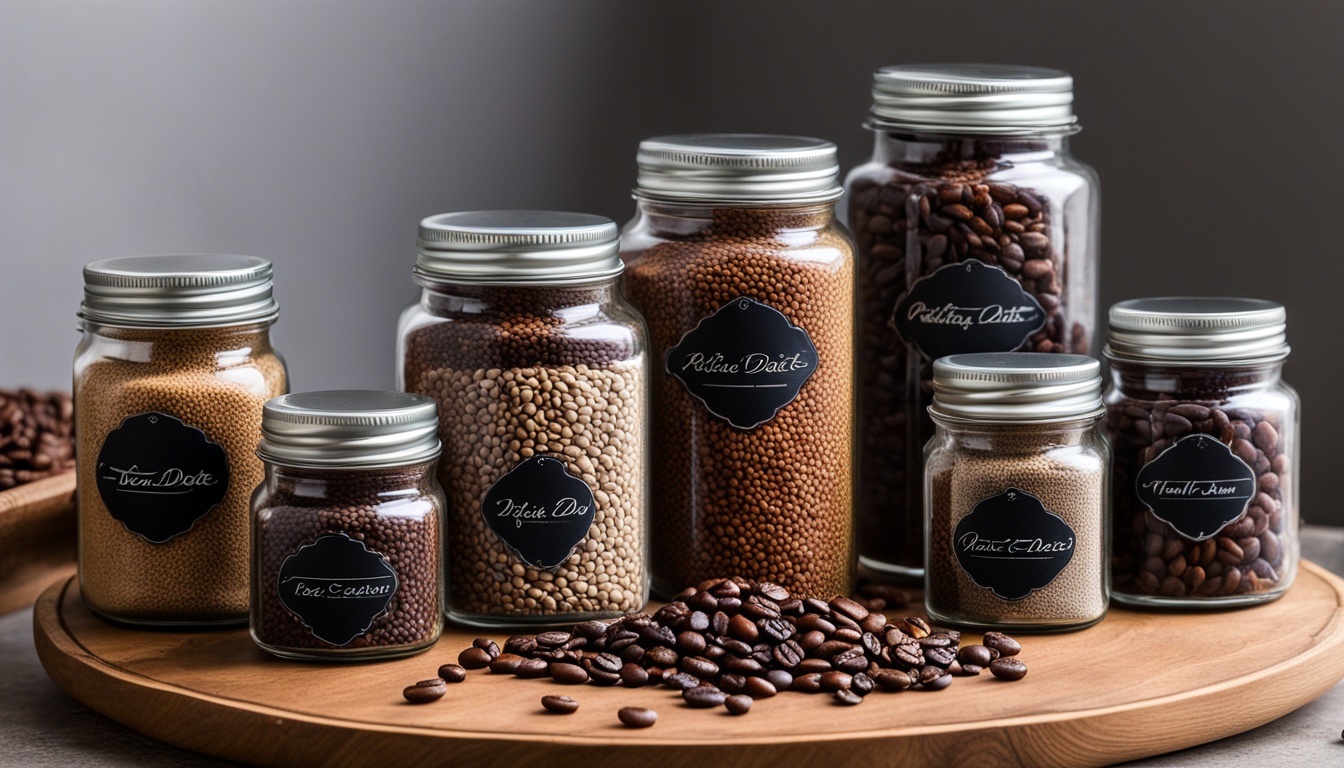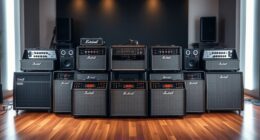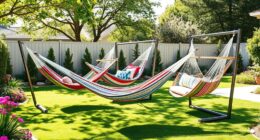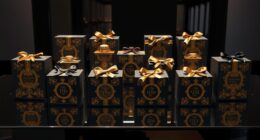The National Coffee Association recommends brewing coffee at a temperature between 195 and 205 degrees Fahrenheit. This highlights the importance of temperature control in coffee making. In the coffee world, pour-over and drip brewing are two popular methods.
Choosing between pour-over and drip coffee changes the taste. It also shows what you like and how you live. We’ll look into each way to help you pick the best one for your coffee.
Key Takeaways
- The optimal brewing temperature for coffee is between 195 and 205℉.
- Pour-over coffee allows for precise control and customization of the brewing process.
- Drip coffee makers brew larger batches, typically from 2 to 14 cups.
- Pour-over coffee often results in a more robust flavor compared to drip coffee.
- Both methods recommend a medium grind size for optimal extraction.
- Pours-over brewing takes approximately 3-5 minutes, while drip coffee brewing takes 2-5 minutes.
Understanding Pour-over Coffee
Pour-over coffee is loved by those who enjoy making coffee by hand. It means pouring hot water over grounds in a filter. This makes many different flavors possible. It’s great for those who want to tweak their brewing, like adjusting grind size or water temperature. This way, pour-over coffee often tastes clean and smells wonderful, attracting many fans.
What is Pour-over Coffee?
Pour-over coffee is a hands-on way to brew coffee that lets you control the flavor. You can change how it tastes and feels to make it just right for you. With many Americans drinking coffee every day, more are trying this method for a great taste.
Equipment Needed for Pour-over Coffee
To start making pour-over coffee, you’ll need some key items:
- Pour-over cone: Where you put the coffee grounds
- Filters: These separate the grounds from your coffee, and can be paper or metal
- Gooseneck kettle: This kettle helps you pour water just right
- Mug or carafe: Where the coffee goes once it’s brewed
The best grind for this coffee is medium to medium-coarse, like sea salt. A good grinder is key for consistent coffee. Equipment for pour-over coffee can cost between $20 and $65, important for coffee lovers to know.
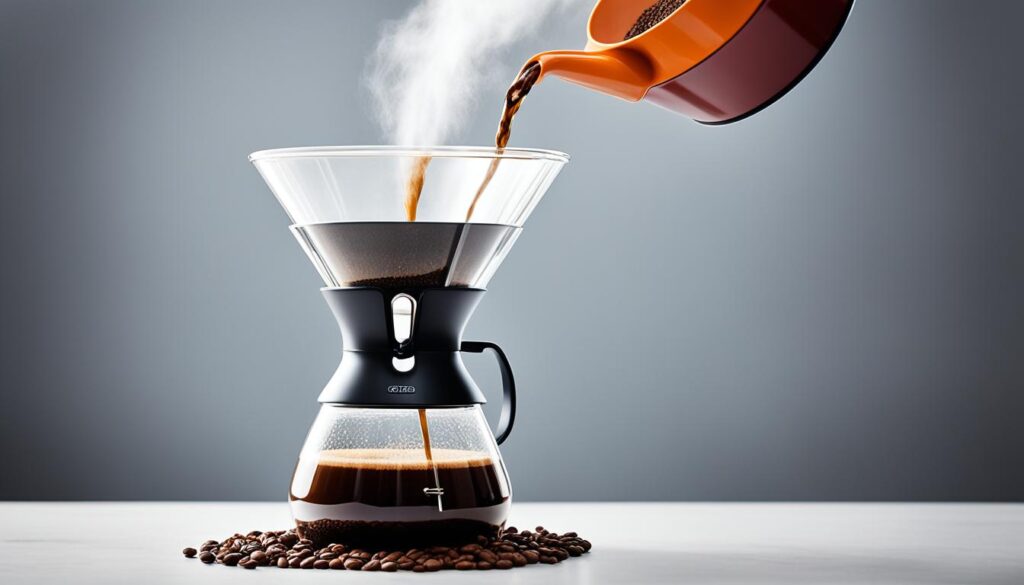
| Equipment | Purpose | Price Range | Material Options |
|---|---|---|---|
| Pour-over Cone | Holds coffee grounds during brewing | $20 – $65 | Glass, Ceramic, Plastic |
| Filters | Separates grounds from brewed coffee | $5 – $15 | Paper, Metal |
| Gooseneck Kettle | Allows for precise pouring control | $30 – $85 | Stainless Steel, Plastic |
| Mug or Carafe | Collects the brewed coffee | $10 – $50 | Glass, Ceramic, Plastic |
Exploring Drip Coffee
Drip coffee makes getting your favorite drink easy and quick. It’s popular because automatic machines do the work simply and well. To understand drip coffee, we look at how it’s made with these machines.
What is Drip Coffee?
Drip coffee uses a machine that heats water and pours it over coffee grounds in a filter. It makes a lot of coffee, from four to twelve cups. This method gives a consistent taste, perfect for any time, like morning meet-ups or chill gatherings.
Key Equipment for Drip Coffee
To make drip coffee, you need a few things: an automatic coffee maker, filters, and electricity. Coffee makers often have extra features. These can be things like plates to keep coffee warm, ways to choose how strong your brew is, or timers. These features let you make your coffee just how you like it, balancing taste and ease.
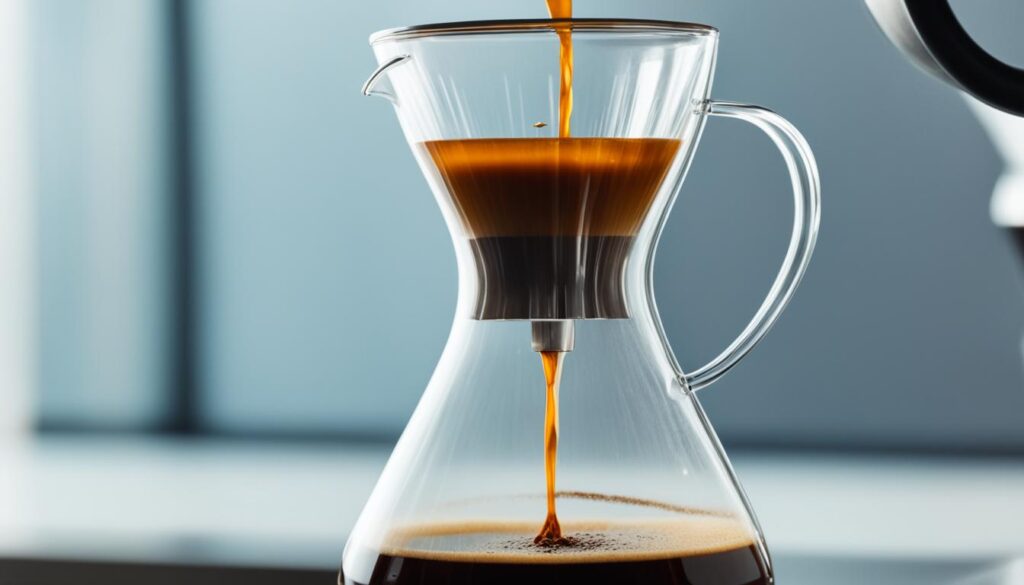
Pour-over vs. Drip Coffee: Which method is right for you?
Choosing between pour-over and drip coffee is about what you like and how easy you find the brewing. Each one brings something special to the table. This lets coffee fans shape their brewing journey their way. While pour-over coffee may take a little more time and attention to detail, some people enjoy the process as part of their morning routine. On the other hand, drip coffee offers a quick and convenient way to get your caffeine fix. It’s important to note that both brewing methods can be enjoyed in moderation, but it’s recommended to limit caffeine intake to reduce the risks during pregnancy.
Flavor Profiles
Pour-over coffee has a rich and intricate flavor. It lets you control how the water soaks the grounds, affecting the taste. The grind size, water speed, and soaking time can change the whole experience. This personal touch makes many say it’s the best. On the other side, drip coffee is smoother and more the same every time. Its automated method provides less room to tweak the flavor.
Time and Ease of Brewing
Making pour-over coffee takes 3-5 minutes and needs your full attention. However, a drip machine brews coffee in 2-3 minutes with less fuss. This is why many American homes and diners go for drip coffee. Yet, for those who love making their coffee a special way, pour-over wins, despite the extra time needed.
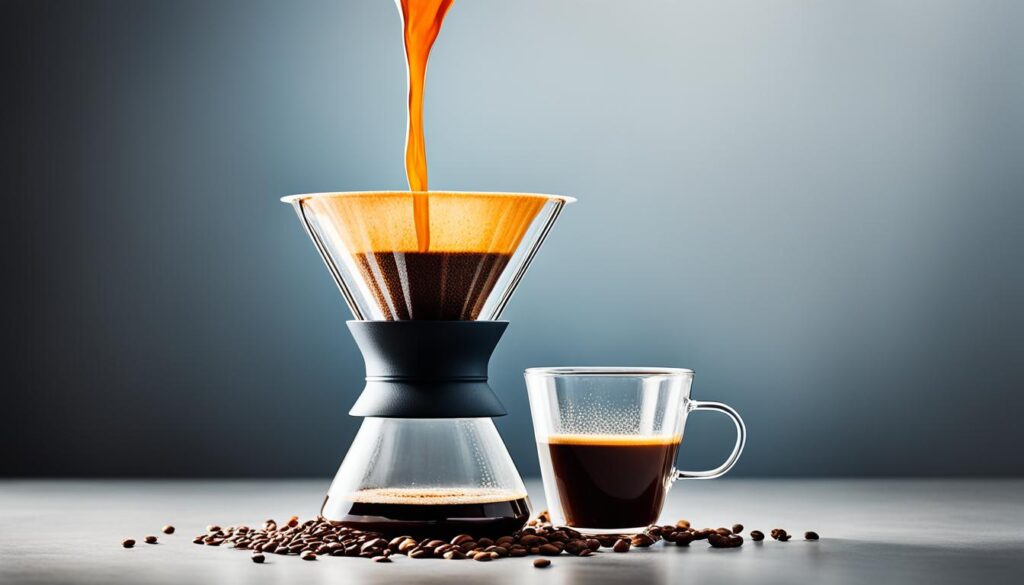
| Aspect | Pour-over | Drip Coffee |
|---|---|---|
| Flavor Profile | Richer and complex | Smoother and uniform |
| Brewing Time | 3-5 minutes | 2-3 minutes |
| Brewing Convenience | Requires engagement | Fully automated |
| Customization | High | Low |
In the end, it’s all about what you prefer. Whether you adore the deep flavors of pour-over or the ease of drip coffee, both methods enhance the coffee experience in their own ways.
Factors Affecting Coffee Quality
Many factors affect the taste of coffee. Paying attention to how coffee soaks up water, how it’s extracted, and the water’s heat makes a big difference. These steps can make coffee more enjoyable for those who love it.
Saturation and Extraction Methods
Getting the coffee wet properly is key. The pour-over method does a great job at this. It soaks the coffee well, bringing out complex flavors. This method makes the coffee and water mix fully, leading to a richer taste.
Drip coffee makers might not soak the coffee as evenly. This might make the coffee taste less rich and smooth. Paying attention to soaking can uncover the full taste of good coffee beans.
Temperature Control
The heat of the water is very important for making coffee. With pour-over coffee, you can control the water’s heat very well. The best heat for this method is between 195°F and 205°F.
Many coffee machines don’t keep the water temperature steady. This can cause the coffee to be too weak or too strong. These changes in temperature can really change how the coffee tastes.

Conclusion
The debate on pour-over vs. drip coffee presents benefits for all kinds of coffee lovers. Pour-over coffee offers precise control over many aspects of brewing. These include grind size, water temperature, and how often water is poured.
This control allows coffee fans to draw out a richness in flavor. It’s a kind of taste that’s tough to get with a machine.
Meanwhile, drip coffee has seen big changes, especially with machines like the Bonavita Connoisseur. These machines bring ease to the table, making them a hit with many. They offer a simpler way to enjoy coffee that still tastes great.
That’s why a lot of people still favor drip coffee in cafes all over. It’s easy to use, can be set ahead of time, and makes lots of coffee at once.
Choosing between pour-over and drip coffee is all about what you like. It depends on the taste you’re after, how you like to make your coffee, and what’s easiest for you. With this info, you can pick the method that fits your life and tastes best.
Whether you like making coffee by hand with pour-over or prefer the quickness of drip coffee, there’s no wrong pick. Both ways offer a great journey into coffee brewing.
